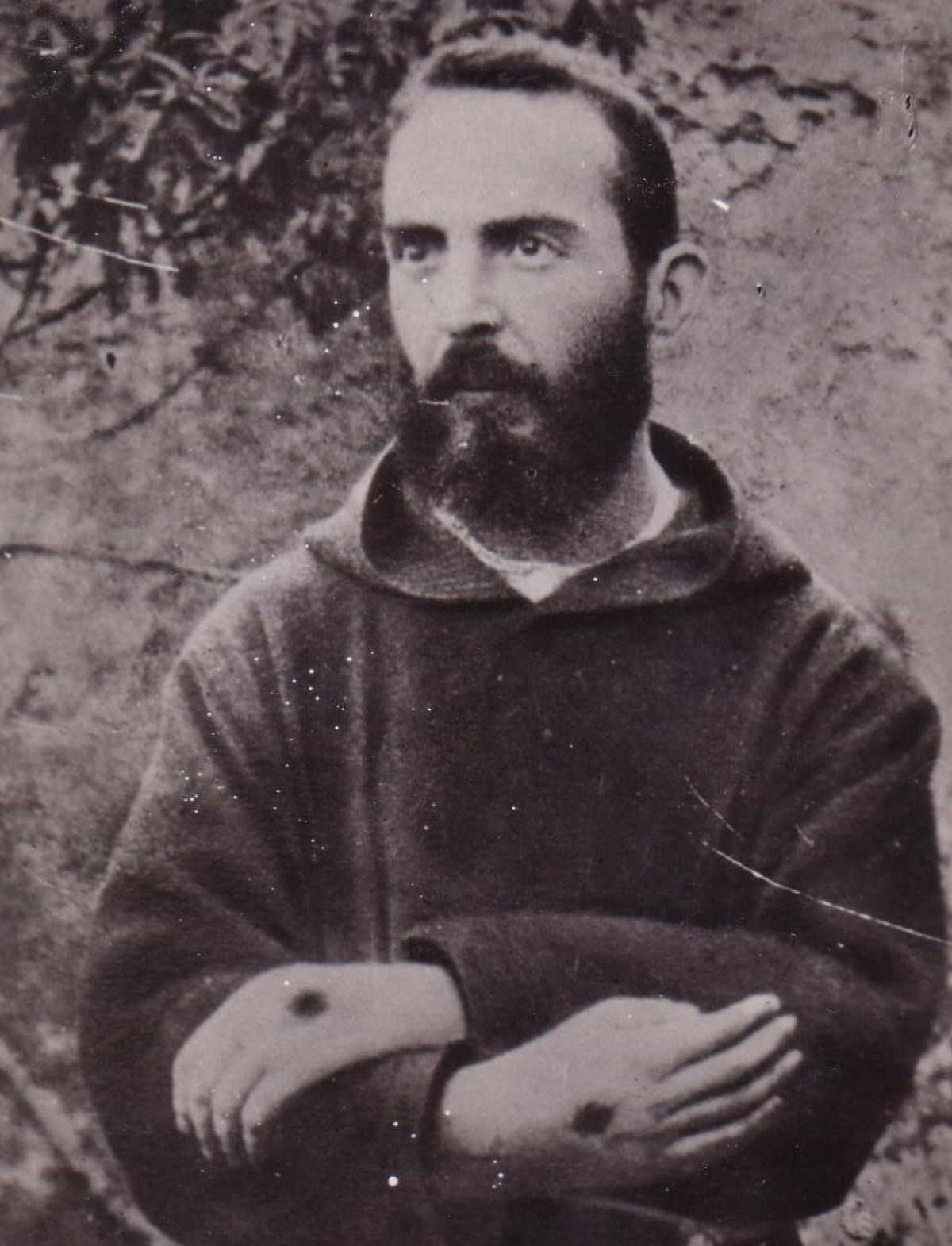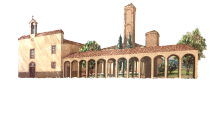"Pray, hope, and don't worry."
St. Padre Pio was an Italian priest who was known for his piety and charity, as well as the gift of the stigmata, which has never been explained. His dedication to the preservation of the truth and commitment to the spiritual welfare of his community embody why he is our Patron Saint.
Efficacious Novena
to the Sacred Heart of Jesus
to the Sacred Heart of Jesus
This novena prayer was recited every day by Padre Pio for all those who asked for prayers. The faithful are invited to recite it daily, so as to be spiritually united with the prayer of St Padre Pio.
I. O my Jesus, you have said: “Truly I say to you, ask and it will be given you, seek and you will find, knock and it will be opened to you.” Behold I knock, I seek and ask for the grace of [insert your intention.]
Our Father…Hail Mary…Glory be to the Father…Sacred Heart of Jesus, I place all my trust in you.
II. O my Jesus, you have said: “Truly I say to you, if you ask any thing of the Father in my name, He will give it to you.” Behold, in your name, I ask the Father for the grace of [insert your intention.]
Our Father…Hail Mary…Glory be to the Father…Sacred Heart of Jesus, I place all my trust in you.
III. O my Jesus, you have said: “Truly I say to you, heaven and earth will pass away but my words will not pass away.” Encouraged by your infallible words I now ask for the grace of [insert your intention.]
Our Father…Hail Mary…Glory be to the Father…Sacred Heart of Jesus, I place all my trust in you.
O Sacred Heart of Jesus, for whom it is impossible not to have compassion on the afflicted, have pity on us miserable sinners and grant us the grace which we ask of you, through the Sorrowful and Immaculate Heart of Mary, your tender mother and ours.
Say the Hail, Holy Queen and add: St. Joseph, foster father of Jesus, pray for us.

St. Padre Pio was born Francesco Forgione, on May 25, 1887, in Pietrelcina, Italy. His parents were peasant farmers. He had an older brother and three younger sisters, as well as two other siblings who died in infancy. As a child, he was very religious and by the age of five he reportedly made the decision to dedicate his life to God.
-
Baptized Francesco Forgione, Padre Pio was the fourth of eight children born to Maria Giuseppa DeNunzio and Grazio Maria Forgione in Pietrelcina (Benevento) Italy.
1887 -
Francesco arrives in Morcone (Benevento) Italy to begin his novitiate in the Capuchin Franciscan Order. He is given the name Fra Pio.
1903 -
On August 10, Fra Pio is ordained a priest in the Cathedral of Benevento and offers his First Mass in Pietrelcina as Padre Pio. Less than a month later, on September 7, the first signs of the Stigmata appear after praying in the Piana Romana countryside.
1910 -
Padre Pio is called to serve the Italian Army Medical Corps and is sent to Naples.
1915 -
For the first time, Padre Pio arrives at Our Lady of Grace Capuchin Friary in San Giovanni Rotondo for purposes of recovering from illness. For the next year, he will be recalled to Naples and the military service, each time being sent back to the Friary to continue his recuperation.
1916 -
On March 18, Padre Pio is permanently returned to San Giovanni Rotondo and awaits his official discharge from the military.
1918 -
From the evening of August 5th to the morning of August 7th, without interruption, the supernatural manifestation of the Transverberation takes place upon and within Padre Pio, leaving a visible and bleeding wound on his chest, over his heart.
1918 -
On September 20th, the wounds of Christ Crucified appear on the body of Padre Pio, piercing both hands, both feet, and along with his side wound, bleed for the next 50 years.
1918 -
For a period of five months, Padre Pio is regularly examined by Drs. Romanelli, Bignami, and Festa, who ultimately determine the wounds as true stigmata of supernatural origin.
1919 -
After being banned from offering public masses or confessions in 1931, Padre Pio is permitted to resume holding public Masses and hearing the confessions of the faithful.
1934 -
Before beginning the work of clearing the site for the construction of the hospital “Casa Sollievo della Sofferenza” (Home for the Relief of Suffering), Padre Pio blesses the workers, the ground, and the equipment.
1947
-
Padre Pio offers Mass on the front portico of the hospital, Casa Sollievo della Sofferenza, thus inaugurating this best known of his social and charitable works.
1956 -
Due to his aging and poor eyesight, Padre Pio is granted special dispensations by the Holy See, granting him permission to continue using Latin, as well as be seated when offering the Holy Mass.
1965 -
Weak and no longer able to use his legs, Padre Pio begins using a wheelchair to move about the Friary and Church.
1968 -
Vera Calandra, eventual Foundress of the National Centre for Padre Pio, travels to San Giovanni Rotondo, Italy, with ill daughter Vera Marie and two of her other children. Padre Pio prays over the children, laying his wounded hands on their heads, and Vera makes a private promise to God: If her baby girl lives, the whole world will know the greatness of Padre Pio. “Please God, make a miracle so that all the people will believe.”
1968 -
At 5:00 A.M. on September 22, Padre Pio sings Holy Mass before the large crowd of members of his Prayer Groups gathering in San Giovanni Rotondo to celebrate the 50th anniversary of his stigmatization. He collapses at the altar at the end of Mass and is supported by the American Friar, Br. Bill Martin. At 6:00 P.M., Padre Pio gives his final blessing to the crowd in the church and retires to his cell. This would be the end of his public ministry on Earth.
1968 -
At 2:30 A.M. on September 23, having received the Last Sacraments and renewing his religious vows, Padre Pio dies in the Odor of Sanctity, with his Holy Rosary in his hands and the words “Gesu… Maria” (Jesus… Mary) on his lips. In the days leading up to his death, the stigmata had slowly started to vanish, and on the morning of the 23rd, there are no traces of the wounds on Padre Pio’s body.
1969 -
The official procedure is initiated for the Cause for Padre Pio’s Beatification and Canonization.
1969 -
The Most Reverend Valentino Vailati, Archbishop of Manfredonia, presents to the Sacred Congregation for the Causes of Saints the required documentation to obtain the “nulla osta” to officially introduce Padre Pio’s Cause for Beatification.
1973 -
Unanimous pronouncement that Padre Pio lived the Theological, Cardinal, and Associated Virtues to a heroic degree. The Vatican Concistorum declares Padre Pio “venerable.”
1997 -
On May 2nd, 1999, in St. Peter’s Square, Rome, Pope John Paul II proclaims Venerable Pio “Blessed” during a Mass and Ceremony attended by over a half-million people and simultaneously broadcast around the world.
1999 -
During a solemn Canonization Ceremony in St. Peter’s Square, Rome, Pope John Paul II proclaims Blessed Pio “St. Pio of Pietrelcina.”
2002
For More Information About St Padre Pio
-
111 Barto Road, Barto PA, 19504
-
This email address is being protected from spambots. You need JavaScript enabled to view it. -
1-610-845-3000
-
padrepio.org
